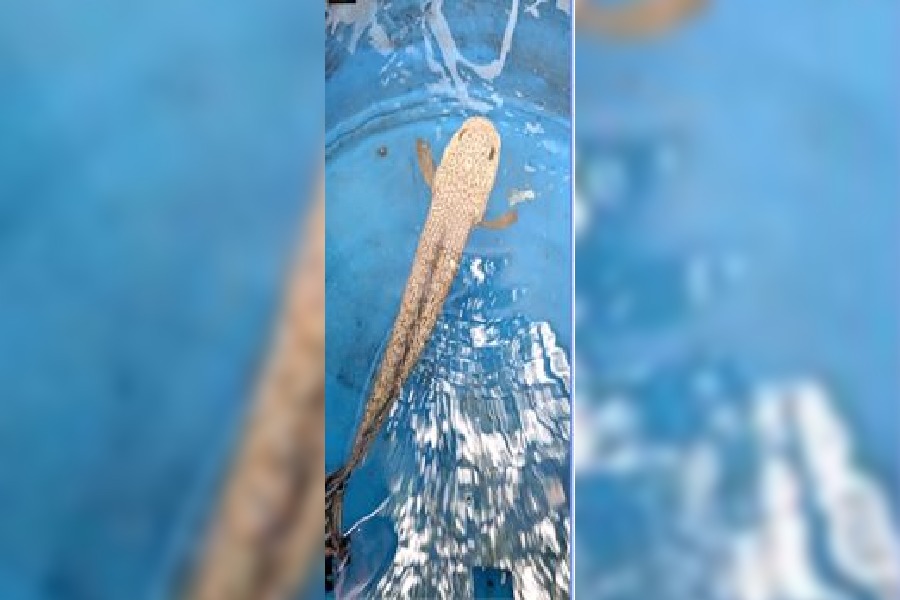A morning swoop by a team of forest officials on a shop in Sonarpur yielded a prized catch — five bright and colourful fish with long dorsal fins and large mouths.
The Barca snakehead (Channa barca) fish — a rare and ornamental species of snakehead that wildlife officials said is endemic to the upper Brahmaputra river basin in northeastern India and also Bangladesh — is in high demand among fishkeepers.
A single fish is known to fetch more than Rs 1.5 lakh on the international market, said sleuths of the Wildlife Crime Control Bureau (WCCB).
A team that included officials of the bureau and the South 24-Parganas forest division raided the shop, which deals in ornamental fish and aquariums, near the Sonarpur railway station in South 24-Parganas.
“We had received information that such fish had been smuggled into the city and were being kept at a shop near Sonarpur station,” said Milan Mondal, divisional forest officer, South 24-Parganas.
Two men were arrested from the shop.
“The fish is in high demand in countries like China, Malaysia and Thailand. There is a growing demand for it in India, too,” said Mandal.
“Since it is in high demand in the international market, it is susceptible to illegal trade. Until recently, it did not have legal protection in India. But last year, it was brought under the protected category and was listed in Schedule II of the Wildlife Protection Act,” said a WCCB official.
Which means trading or possession of Barca snakeheads or their body parts is illegal across the country.
In 2014, the International Union for Conservation of Nature (IUCN) had assessed the fish as a critically endangered species.
According to the IUCN website, the fish is an endangered species that lives in the Brahmaputra river and is limited to specific regions of the Orang National Forest and parts of Nagaland.
“The fish takes refuge in vertical burrows or holes along the peripheries of wetlands that usually dry up during the winter. These metre-deep burrows typically lead to a bigger chamber with a groundwater table that rises up during the monsoon season leading to the fish emerging to hunt and breed,” says the website.
“It is found in the Brahmaputra basin which, because of being a flood-prone area, suits its typical habitat. It is an ornamental species of fish and found in parts of Assam where there is a confluence of a wetland and the Brahmaputra river or one of its tributaries.”
They earn their common name Snakehead because of their flattened shape and the scales on their heads that are reminiscent of the large epidermal scales on snakes.
The fish found at the shop in Sonarpur have been taken to Namkhana — around 100km from the heart of Kolkata — where they were put in a freshwater tank. “They have been provided with snails, insects and smaller fish to eat,” said a forest official.
“The two arrested men said they were not aware that the fish were protected and they said they had bought it from a man who said he had got them from Assam. We are trying to track down this man.”
B.K. Mahapatra, former principal scientist at the Salt Lake-based ICAR-Central Institute of Fisheries Education, said Barca snakeheads have a huge demand in the West. “Southeast Asian countries are mostly pit stops. The traders in these countries buy the fish from India and sell it to the European or US-based buyers,” he said.
